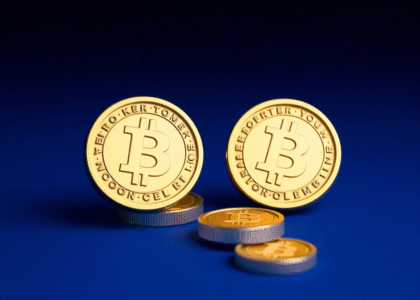The cryptocurrency market has evolved significantly since the introduction of Bitcoin in 2009. With thousands of digital currencies in existence, traders now have a plethora of options to choose from, making the market more competitive than ever. In 2023, the market’s complexity requires traders to be equipped with the right strategies to maximize their returns. In this comprehensive guide, we will examine the best trading strategies for cryptocurrency traders in 2023, with a focus on proven facts, examples, and reference links from trusted academic or governmental sources.
I. Fundamental Analysis
Fundamental analysis involves evaluating a cryptocurrency’s intrinsic value based on various factors, such as market capitalization, adoption rates, developer activity, and the regulatory environment.
A. Evaluating a cryptocurrency’s value
Market capitalization: Market capitalization, or market cap, is calculated by multiplying the current price of a cryptocurrency by its circulating supply. It’s a crucial metric that helps traders gauge the size and potential growth of a particular digital asset.
Reference: Investopedia: Market Capitalization
Adoption rates: The rate at which a cryptocurrency is being used and accepted can indicate its potential for future growth. Higher adoption rates often result in increased demand, driving up the value of the digital asset.
Developer activity: A committed and active development team can signal the potential for a cryptocurrency’s long-term success. Traders can analyze developer activity through platforms like GitHub, which provide insights into project updates and contributions.
Regulatory environment: Government regulations can significantly impact the valuation of cryptocurrencies. A supportive regulatory environment can lead to increased adoption and investment, while strict regulations may hinder growth.
B. Long-term holding (HODL)
Benefits of holding: Long-term holding, or HODLing, is a popular strategy among cryptocurrency traders. It involves buying and holding onto digital assets for an extended period, regardless of market fluctuations. This approach can lead to significant returns, especially for those who invested in cryptocurrencies like Bitcoin and Ethereum in their early stages.
Diversification: Diversifying your cryptocurrency portfolio can help spread risk across multiple assets. It is essential to invest in different cryptocurrencies and sectors to minimize the impact of a single asset’s poor performance.
Dollar-cost averaging: Dollar-cost averaging (DCA) is an investment strategy where investors regularly invest a fixed amount of money in a particular asset, regardless of its price. This approach helps minimize the impact of market volatility and reduce the risk of making poor investment decisions based on short-term price movements.
II. Technical Analysis
Technical analysis is a trading strategy that involves analyzing historical price data and trends to predict future price movements.
A. Chart analysis
Support and resistance levels: Support and resistance levels are critical price points at which a cryptocurrency’s price tends to reverse or consolidate. Identifying these levels can help traders make informed decisions about when to enter or exit a trade.
Moving averages: Moving averages are widely used technical indicators that help smooth out price data and identify trends. Traders often use simple moving averages (SMAs) and exponential moving averages (EMAs) to spot potential buy and sell signals.
Trendlines: Trendlines are lines drawn on a price chart to help identify the direction of a cryptocurrency’s price movement. They can be used to spot potential trend reversals and provide entry or exit signals for trades.
B. Technical indicators
Relative strength index (RSI): The RSI is a momentum oscillator that measures the speed and change of price movements. It ranges from 0 to 100 and helps traders identify overbought or oversold conditions, which may signal potential trend reversals.
Moving average convergence divergence (MACD): The MACD is a trend-following momentum indicator that shows the relationship between two moving averages of a cryptocurrency’s price. Traders use it to identify potential trend reversals and generate buy or sell signals.
Bollinger Bands: Bollinger Bands are a set of three lines plotted around a cryptocurrency’s price, with the outer bands representing standard deviations from the middle band (a moving average). Traders use Bollinger Bands to identify periods of high or low volatility and potential trend reversals.
C. Algorithmic trading
High-frequency trading (HFT): HFT is a type of algorithmic trading that involves making a large number of trades within milliseconds to capitalize on small price movements. HFT can help traders profit from market inefficiencies and gain a competitive edge.
Arbitrage: Arbitrage is a trading strategy that involves simultaneously buying and selling a cryptocurrency on different exchanges to take advantage of price differences. Algorithmic trading can help identify and execute these opportunities quickly and efficiently.
Market making: Market making is a strategy where traders provide liquidity to a market by placing both buy and sell orders. This can help reduce the bid-ask spread and earn a profit from the difference.
III. Risk Management
Effective risk management is crucial for long-term success in cryptocurrency trading. It involves managing exposure to potential losses through techniques such as position sizing, stop-loss orders, and diversification.
A. Position sizing
Fixed fractional position sizing: This approach involves risking a fixed percentage of a trader’s account on each trade. It helps manage risk by automatically adjusting the trade size based on the account’s value.
Fixed dollar position sizing: In this strategy, traders risk a fixed dollar amount on each trade. While it can be simple to implement, it may not provide the same level of risk management as other strategies.
Percent of equity position sizing: This method involves calculating the position size based on a percentage of the total equity in a trader’s account. It helps balance risk and reward by ensuring that a single trade’s potential loss is proportional to the overall account value.
B. Stop-loss orders
Hard stop-loss: A hard stop-loss is an order placed with a broker to sell a cryptocurrency when its price reaches a predetermined level. It helps traders limit their losses and protect their investments.
Reference: Investopedia: Stop-Loss Order
Trailing stop-loss: A trailing stop-loss is an order that moves with the market price, following it at a specified distance. This allows traders to lock in profits while protecting their investments from sudden price reversals.
Mental stop-loss: A mental stop-loss is an informal agreement that traders make with themselves to exit a trade when a specific price level is reached. While this approach relies on self-discipline, it can provide flexibility in managing risk.
C. Diversification
Correlation between cryptocurrencies: Understanding the correlation between different cryptocurrencies can help traders manage risk by diversifying their investments across assets that are less likely to move in tandem.
Benefits of diversifying across industries: Diversifying across various industry sectors can help traders mitigate risk by reducing the impact of a single sector’s underperformance on their portfolio.
Including non-crypto assets in your portfolio: Diversifying your investment portfolio by including non-cryptocurrency assets, such as stocks, bonds, and commodities, can help reduce overall risk and improve long-term returns.
IV. Trading Psychology
A. Emotional control
Recognizing emotional triggers: Emotional triggers, such as fear, greed, and overconfidence, can lead to impulsive trading decisions. Traders must learn to recognize and manage these emotions to maintain a rational approach to trading.
Keeping a trading journal: Documenting trading activities and emotions in a journal can help traders identify patterns, learn from mistakes, and develop strategies for managing their emotions.
Sticking to a trading plan: Developing and adhering to a well-defined trading plan can help traders stay disciplined and focused, reducing the influence of emotions on their decisions.
B. Patience and discipline
Avoiding FOMO (Fear of Missing Out): FOMO can lead traders to make hasty decisions and chase market trends. By staying patient and disciplined, traders can avoid falling victim to FOMO and improve their long-term success.
Recognizing and avoiding overtrading: Overtrading can result in excessive fees, increased risk, and diminished returns. Traders must learn to recognize the signs of overtrading and develop strategies to prevent it.
Adhering to a consistent strategy: Sticking to a consistent trading strategy can help traders build confidence, develop discipline, and improve their long-term performance.
Conclusion
As the cryptocurrency market continues to grow and mature, traders must adapt and refine their strategies to stay ahead. By employing a combination of fundamental analysis, technical analysis, risk management, and trading psychology, traders can increase their chances of success in the ever-evolving digital asset landscape. By staying informed and leveraging trusted sources, cryptocurrency traders can make informed decisions and maximize their returns in 2023.
FAQs
What’s the hottest trading strategy in 2023?
DeFi yield farming still reigns, but layer-2 scalping strategies are gaining major traction. Always DYOR before diving in, fam!
I’ve heard of HODLing. Is that still a thing?
Oh, absolutely! Many crypto OGs swear by HODLing. It’s about long-term gains rather than short-term pumps.
Are meme coins worth trading?
Meme coins can moon, but they’re super volatile. It’s a high-risk, high-reward game. Play cautiously and avoid FOMO.
Is TA still relevant with crypto’s wild swings?
Totally! TA (Technical Analysis) helps to read those crazy market signals. RSI, MACD, and Fibonacci are your besties.
Thoughts on using bots for crypto trading?
Bots can be lit for executing strategies 24/7, especially with the non-stop crypto market. But be wary of “rug pulls” and always backtest!
I’ve seen “whale watching.” What’s that?
It’s tracking big player moves. When whales make splashes, predicting those ripples can be juicy for traders.
How can I manage my risk in crypto?
Set tight stop-losses and don’t over-leverage. Remember, never invest more than you can afford to lose. Stay safu!
Heard a lot about NFTs. Trade or hodl?
NFTs are wildcards! Some hodl for the culture, others flip for quick gains. Do your own vibe check.
Are decentralized exchanges the go-to in 2023?
DEXs are gaining mad respect, especially with improved liquidity and fewer middlemen. But centralized exchanges still have their place, especially for noobs.
Best tools for a crypto trader in 2023?
Chainalysis tools are gold. Add in a dab of TradingView for TA, and toss in some on-chain metrics. You’re set!
Can I trade on multiple blockchains?
Cross-chain is the buzz, bro! Interoperability is king, allowing for multi-chain trades. Just watch those gas fees.
Is staking still profitable this year?
For sure! Staking offers some sweet passive income. Look for high APYs but mind the lock-up periods.






